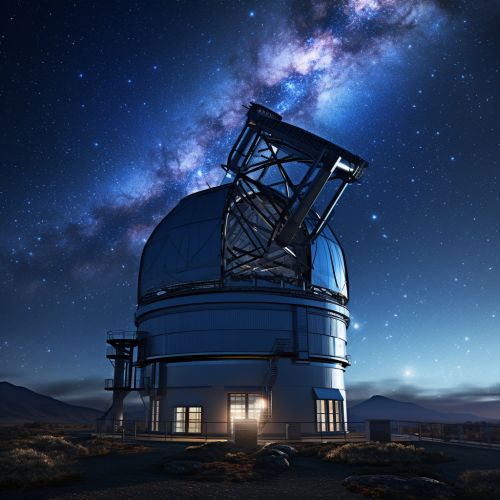Adaptive Optics in Ground-Based Telescopes
Introduction
Adaptive optics is a technology used in ground-based telescopes to improve the resolution of images by reducing the effects of rapidly changing optical distortion. This distortion, often caused by atmospheric turbulence, can significantly degrade the quality of astronomical observations. Adaptive optics systems use a variety of techniques to measure and correct these distortions in real-time, resulting in sharper and more detailed images of celestial objects astronomy.
History
The concept of adaptive optics was first proposed by Horace Babcock in 1953, but it was not until the 1970s that the technology became feasible for use in large telescopes. The first successful demonstration of adaptive optics on a large telescope was carried out at the Palomar Observatory in 1991. Since then, adaptive optics has become a standard feature of many large ground-based telescopes, and has significantly improved the quality of astronomical observations.


Principles of Adaptive Optics
The basic principle of adaptive optics is to measure the distortions in the wavefront of light caused by atmospheric turbulence, and then to correct these distortions using a deformable mirror. The wavefront is measured using a wavefront sensor, which can be either a Shack-Hartmann sensor, a pyramid sensor, or a curvature sensor. The deformable mirror is controlled by a real-time computer system, which adjusts the shape of the mirror to correct the distortions in the wavefront.
Components of an Adaptive Optics System
An adaptive optics system consists of three main components: a wavefront sensor, a deformable mirror, and a real-time computer system.
Wavefront Sensor
The wavefront sensor measures the distortions in the wavefront of light caused by atmospheric turbulence. There are several types of wavefront sensors, including Shack-Hartmann sensors, pyramid sensors, and curvature sensors. Each type of sensor has its own advantages and disadvantages, and the choice of sensor depends on the specific requirements of the telescope.
Deformable Mirror
The deformable mirror is the key component of an adaptive optics system. It is a flexible mirror that can be deformed in real-time to correct the distortions in the wavefront of light. The deformable mirror is controlled by a real-time computer system, which adjusts the shape of the mirror based on the measurements from the wavefront sensor.
Real-Time Computer System
The real-time computer system controls the deformable mirror based on the measurements from the wavefront sensor. The computer system must be able to process the measurements from the wavefront sensor and adjust the shape of the deformable mirror in real-time, typically within a few milliseconds.
Applications of Adaptive Optics in Ground-Based Telescopes
Adaptive optics has a wide range of applications in ground-based telescopes. It is used to improve the resolution of images of celestial objects, such as stars, galaxies, and planets. Adaptive optics is also used in the study of the Earth's atmosphere, in particular the study of atmospheric turbulence.
Future Developments
The field of adaptive optics is continually evolving, with new technologies and techniques being developed to improve the performance of adaptive optics systems. Future developments in adaptive optics are likely to include the use of multi-conjugate adaptive optics, which can correct for distortions over a larger field of view, and the use of laser guide stars, which can provide a reference source for the wavefront sensor in areas of the sky where there are no bright natural stars.
